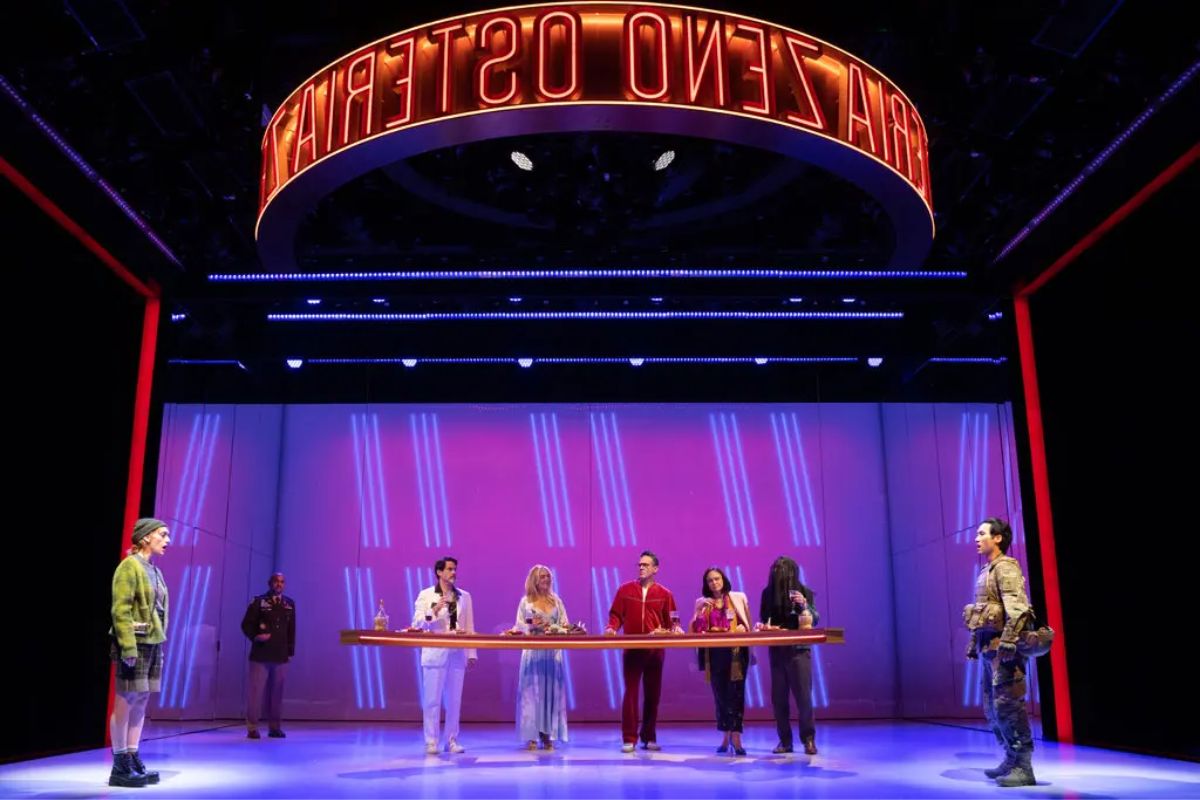Stephen Sondheim possessed a unique talent for exploring diverse genres in his musical compositions. His ability to draw inspiration from niche sources, such as penny dreadfuls for “Sweeney Todd,” epistolary novels for “Passion,” and Roman comedies for “A Funny Thing Happened on the Way to the Forum,” demonstrated his versatility. Sondheim had a knack for delving into these specific styles, crafting songs that were both unique and unforgettable, each distinct from the others.
However, even for Sondheim, surrealism was a challenging genre to tackle. Musical theater itself has an inherent surreal quality, with characters breaking into song at unexpected moments and inexplicable dance numbers. Constructing a musical based on deliberately irrational source material risked amplifying the weirdness to the point of bewilderment, as seen in Andrew Lloyd Webber’s “Cats” and Sondheim’s own “Anyone Can Whistle.”
As we eagerly awaited what turned out to be his final musical, “Here We Are,” there was uncertainty about whether he would proceed with it or abandon the project altogether. The morsels of information that Sondheim and his collaborators disclosed hinted at a potentially misguided endeavor.
What made “Here We Are” unique, and a testament to Sondheim’s brilliance, was its foundation in two Luis Buñuel films, “The Discreet Charm of the Bourgeoisie” (1972) and “The Exterminating Angel” (1962), both steeped in surrealism. These films, though sharing a theme of ridiculing aristocrats perpetually unsatisfied despite abundance, approached surrealism differently. The former was a sunny and whimsical portrayal of friends searching for a meal they could never find, while the latter was a darker narrative of a dinner party from which no one could escape. Despite the seemingly incompatible surreal styles, “Here We Are” masterfully merged them, creating a surrealist musical that was both cohesive and expressive.
Under Joe Mantello’s direction, the production at the Shed was a breathtakingly chic and stylish affair, boasting a cast of Broadway treasures. It confidently embraced its illogical elements, shining in its execution. While the music was quintessentially Sondheim, it occasionally lacked the emotional depth that his songs typically invoke, a possible reflection of the challenges he faced in its composition.
The first act introduced us to Ives’s American counterparts to Buñuel’s French gourmands from “The Discreet Charm of the Bourgeoisie.” Each character was humorously depicted with specific and often obnoxious traits, with the Sondheim vamp accompanying their search for a meal. As they ventured in pursuit of sustenance, the characters unraveled, revealing their true natures, except for Marianne, who remained naively sentimental. The ever-changing scenery, marked by fantastical waiters and extravagant wigs, added to the enchantment of the production.
In Act II, the musical transitioned into the surreal world of “The Exterminating Angel,” where characters found themselves trapped after dinner, unable to escape. While the musical cleverly complicated Buñuel’s antifascist and anti-bourgeois themes, introducing a twist related to the revolution, it had to make the characters unpleasant in the first act to justify their punishment in the second. This approach, however, resulted in a loss of the sophisticated nuance present in Buñuel’s films, with the characters becoming less relatable.
Sondheim could have alleviated this issue by composing more songs for Act II. The lack of songs in the second act may have made structural sense, given the characters’ entrapment in a nightmarish cycle of deprivation. Still, it left audiences yearning for more of Sondheim’s musical genius.
In conclusion, “Here We Are” is a testament to Sondheim’s ability to merge disparate surreal elements into a coherent musical. While it retains the essence of Sondheim’s music, it occasionally falls short in evoking the deep emotions his songs are known for. Nevertheless, it stands as a fitting tribute to the late musical genius.
Also read: Sofía Vergara Embraces New Beginnings After Divorce: A Dinner Date Sparks Interest”
Our Reader’s Queries
What is Stephen Sondheim best known for?
Renowned for his partnership with Leonard Bernstein, he served as the lyricist for the iconic musicals “West Side Story” (1957) and “Candide” (1974). He also collaborated with Richard Rogers on “Do I Hear a Waltz” (1965).
How many musicals did Sondheim write?
Over the course of his career, Stephen Sondheim racked up an impressive 39 awards, including multiple Olivier, Tony, and Grammy Awards. He was also honored with induction into the American Theater Hall of Fame and received the prestigious Presidential Medal of Freedom. Throughout five decades, he created a grand total of 18 musicals, solidifying his reputation as a legendary figure in the world of theater and music.
Why is Sondheim so popular?
David Benedict, the official biographer of Sondheim, recalls Sondheim’s strong aversion to repeating himself. He constantly sought out new forms of expression for his ideas, making it difficult for his work to achieve widespread commercial success.
What was the longest running Stephen Sondheim musical?
“A Funny Thing Happened on the Way to the Forum” snagged six Tony Awards, including Best Musical, and holds the record for the longest Broadway run of any show with Sondheim as both the composer and lyricist.


